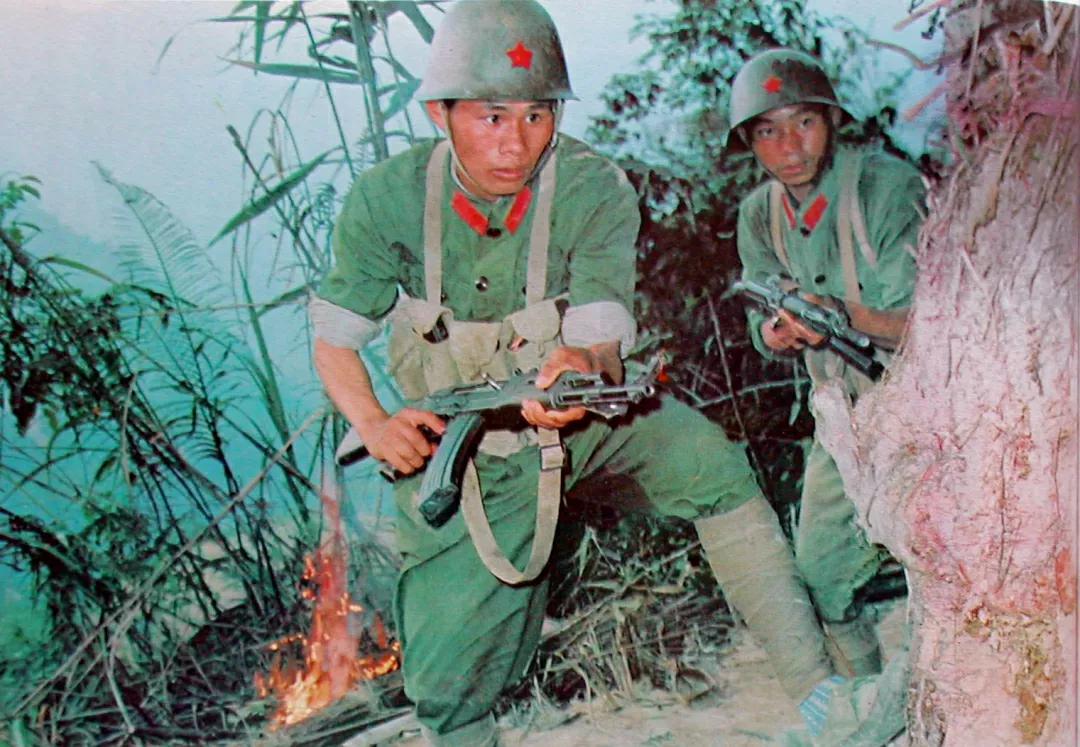In the 1979 counterattack against Vietnam, China won an absolute victory, not only achieving the purpose of warning and punishing Vietnam, but even in the ten years of the Lao Shan Round Battle that followed, China also used the Vietnamese battlefield as a training ground, trained many new soldiers, and increased their actual combat experience. It can be said that although this is the last war China has fought so far, it has brought us a lot of benefits.

A large number of recruits took to the battlefield
However, most people who have visited several martyrs' cemeteries on the Sino-Vietnamese border have found that in the cemeteries, many of the martyrs' tombstones are inscribed on the enlistment time around 1979, which means that these soldiers are only new recruits who have just joined the army when they enter the war. However, when the counterattack against Vietnam broke out in 1979, Vietnam's strength was not weak, and under such circumstances, there was naturally no idea of wanting to "train troops".
Moreover, according to the earlier post-war summary of the troops, it can be seen that during the war, many soldiers of our army suffered many casualties because they did not know how to use tactics or even how to evade the blow. So why did our army send a large number of new soldiers to the battlefield in the first place?
A and B
To answer this question, we need to understand what the PLA Army was like in the first place. It is reported that since 1975, the infantry division of our army has been divided into two types of formations -- the A division and the B division.
Among them, the A division is a full division, mainly responsible for daily military training, including actual combat simulation, the execution of various military tasks, etc., while the B division is a simplified division, mainly responsible for the construction, production, and other work in the rear, so it is not as reliable as the A division in military training. In the distribution of military personnel, the number of the B division is about 1/2 of the first division, about 6,000 people.
Recruit veterans and replenish new recruits
When we learned that we were going to fight against Vietnam, our army began to change to a state of combat readiness, and adjusted the divisional level of the troops, not only enriching the B division as much as possible, expanding it into a first-class division, and equipping it with a large number of soldiers and equipment.
The change in the strength of the division naturally cannot be filled casually, so the first thing the military department thought of was to transfer the backbone veterans of other military regions to the units participating in the war, but the number of veterans was limited, and the number of B divisions participating in the war was too much, so in order to reach the state of full strength, it had to replenish a large number of new soldiers.
Under such circumstances, the "transformed" B division will face a major problem, that is, the backbone strength is weak, and the overall military quality of the army is not high.
The proportion of recruits is very large
It is reported that in the Kunming Military Region, the number of troops in the first and second type infantry regiments at that time increased from 1465 to 2756, of which the number of new soldiers accounted for 45% of the total number.
Moreover, most of the recruits were not skilled, so they were basically added to the grass-roots companies of the first-line charge, resulting in a sharp increase in the number of new recruits in the infantry company, and the number of casualties was also very large.
epilogue
From the current point of view, the method of expanding the B division into a first-class division obviously has many major flaws, after all, the gap in the number of soldiers produced by the expansion is too large, the number of new recruits is large, and the tacit understanding of strategic cooperation within the unit is not high enough.
Moreover, if there is a large-scale war afterwards, this method of transferring the backbone members of other military regions is certainly not advisable, so after this war, this method of organization and transformation is recommended to be removed.